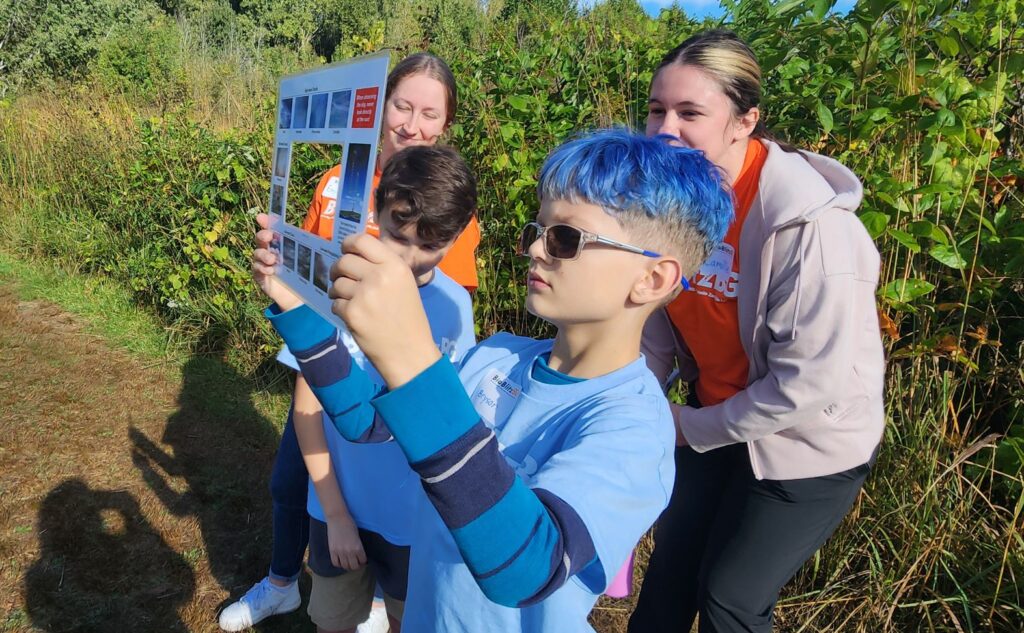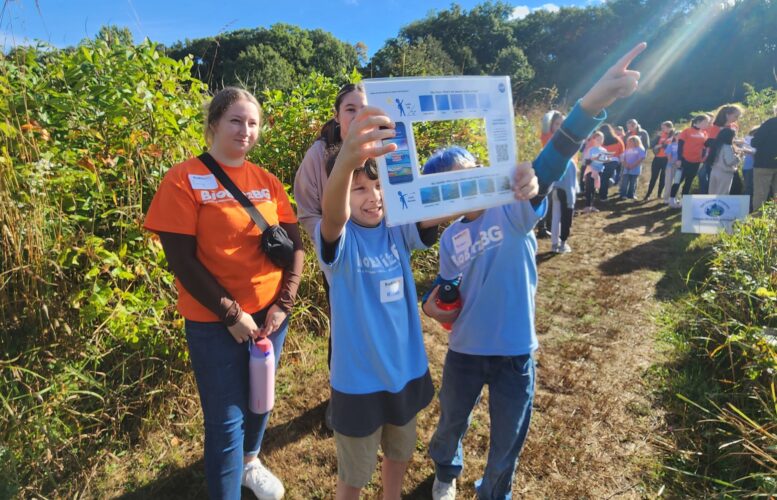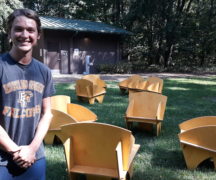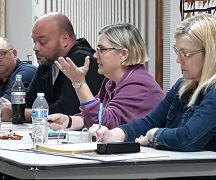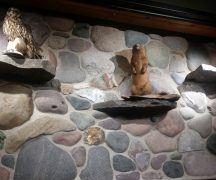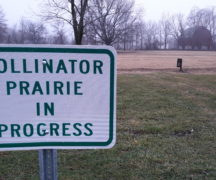By JAN McLAUGHLIN
BG Independent News
Bowling Green fourth graders spent Wednesday morning working with NASA – with their feet never leaving the ground.
Not bad for a bunch of kids from Crim Elementary School.
Equipped with thermometers and cloud charts, the students gathered data about the varying temperatures in Wintergarden Park’s woods, prairie and trail for the fourth annual BioBlitz.
The more adventurous children were covered in burrs, and the more cautious ones squealed when coming in contact with spider webs.
The goal of the BioBlitz was to educate local elementary students about habitat conservation. By studying the park’s natural habitats, the lesson begins on how to preserve and maintain a prairie ecosystem.
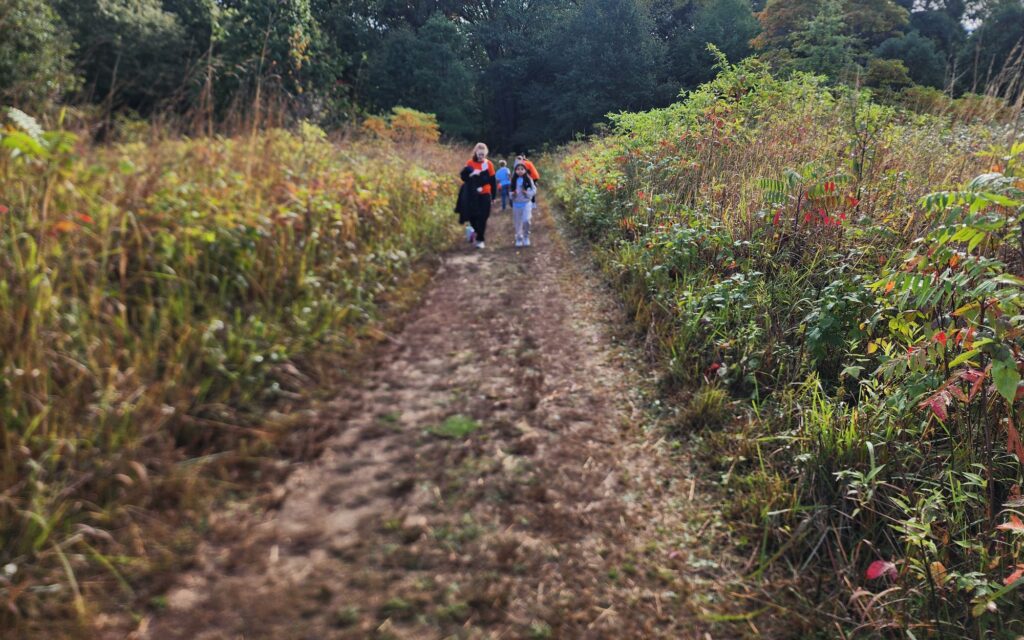
In addition to collecting data for NASA, the fourth graders were also being exposed to nature and separated from their electronic screens. That in itself is worth a great deal, according to Jodi Haney, professor emerita at Bowling Green State University, one of the sponsoring groups of BioBlitz along with the Toledo Zoo and the Northwest Ohio Center of Excellence in STEM Education.
“As soon as we know something, we care about it,” Haney said about acquainting kids with nature. And when they care, they start to look for solutions. “We care about the environment, and we believe we can do something.”
Youth should feel empowered to protect the environment, Haney said.
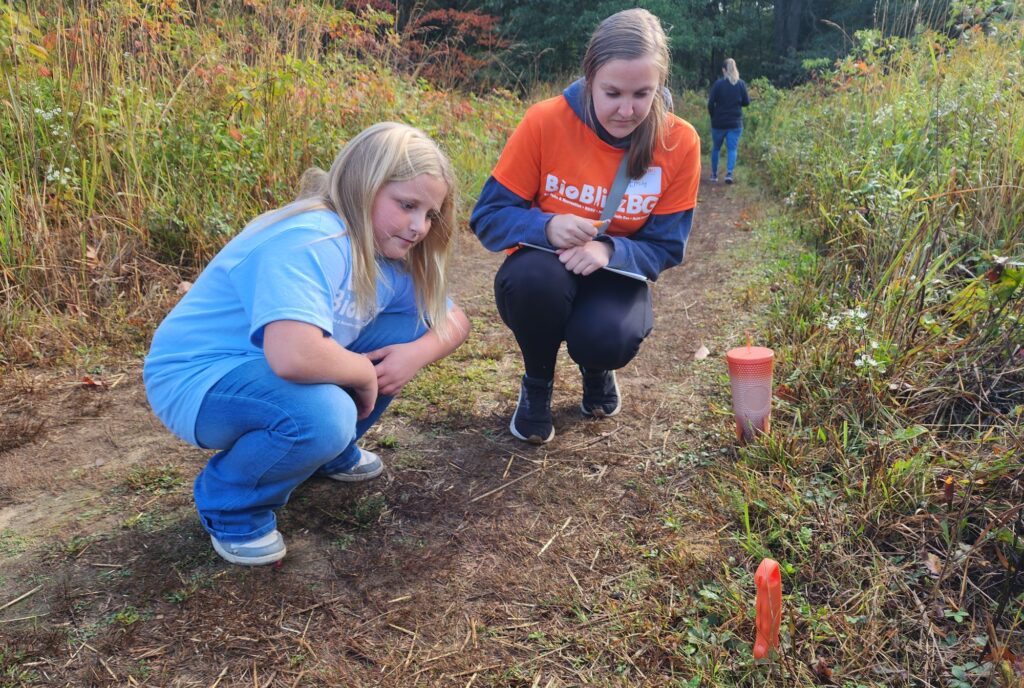
And working with NASA did make the fourth graders feel pretty important. They were charged with measuring the varying temperatures – in celsius – under the ground, on the soil surface, and in the air. They also had to test the temperature in different sections of the park – in the woods, in the prairie, and on a trail.
Close to 80 fourth graders teamed up with 40 BGSU students and recorded their data on a big chart in the middle of the prairie – and discussed why it would be colder in the woods, warmer in the prairie and even toastier on the sun-soaked trail.
The data collected at Wintergarden Park will be sent to NASA, Haney said. NASA will use the information from the students to check on their satellites to see if they are accurately recording those temperatures.
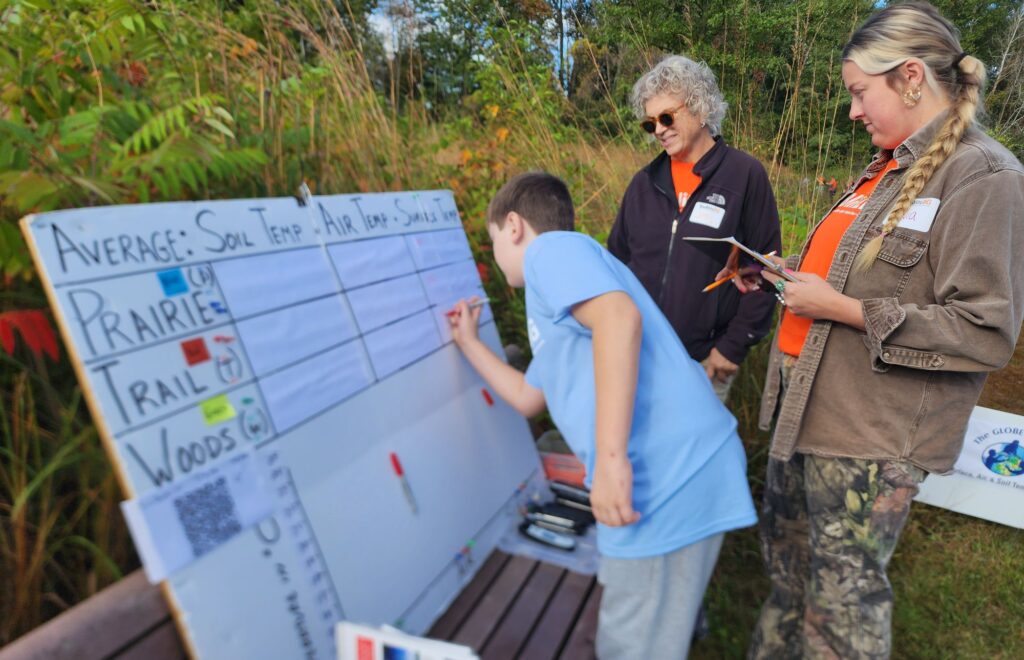
Haney hopes the students go home knowing that anyone can be a scientist, regardless of their age.
“I really feel like the students care,” she said. “And when you care about it, you can solve problems.”
Fourth grader Emily Arnett was paired up with BGSU student Emily Johannssen. As they searched for a spot where their thermometer would penetrate far enough into the ground to get a proper reading, they talked about the importance of the BioBlitz.
“We’re giving information to NASA,” Johannssen said. Which sounded great to Arnett, who said she cares about the environment, “a lot.”
“It’s a big part of earth and why we’re here,” the young scientist said.
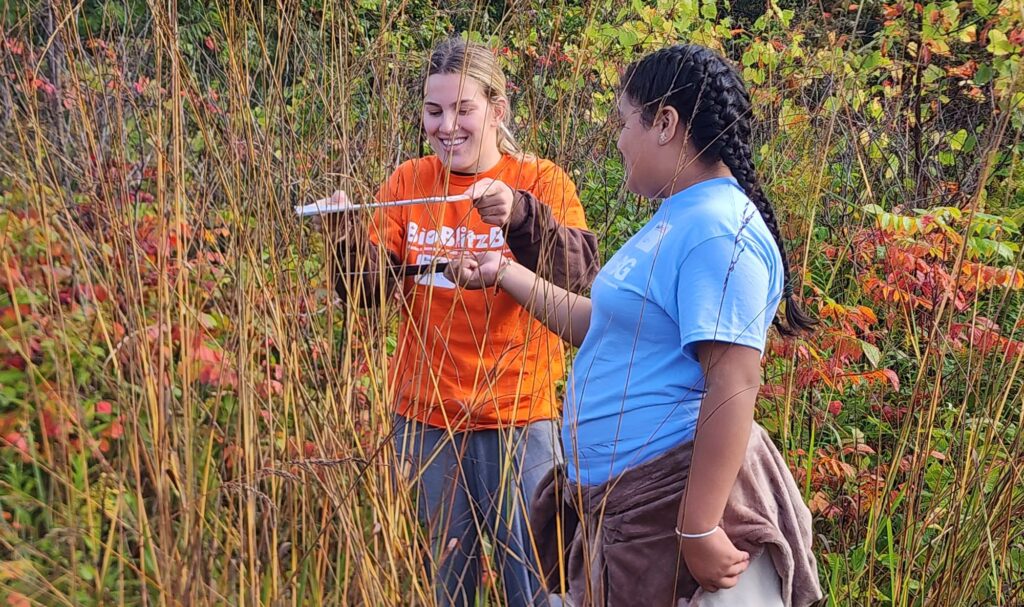
Meanwhile Ruby Luna, from Crim, was trying to find a spot in the prairie where the bug population was low.
“It’s kind of cool to be working for NASA,” said Mykenzie Schoolcraft, the BGSU student working with Luna.
And down the trail a bit were fourth graders Blake Morris and Bryson Hopkins, who were gazing at clouds through a chart showing cloud formation photos. They squinted at the clouds and tried to determine their types.
